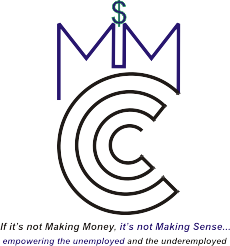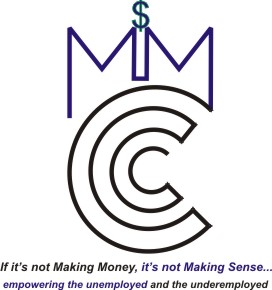What You Need To Know About Home Inspections
Home inspections are critical evaluations that prospective homeowners should not overlook. They involve a detailed examination of a property’s physical structure and mechanical systems, from the roof to the foundation. Understanding what a home inspection entails, its duration, and its impact can be crucial for anyone involved in buying or selling a property. This process helps to uncover hidden issues and ensures that the property is in good condition, preventing costly surprises after purchase. Whether you are a first-time home buyer or a seasoned investor, knowing what to expect during a home inspection is essential.
The Importance of Understanding Inspection Duration
The length of time a home inspection takes can vary significantly depending on several factors such as the size of the home, its age, and the scope of the inspection. Buyers and sellers alike benefit from understanding these variables as they prepare for the real estate transaction. Proper planning and expectations not only facilitate smoother transitions but also enhance the efficacy of the decision-making process based on the inspection findings.
Factors Influencing the Duration of Home Inspections
A variety of elements can affect how long a home inspection will last. Firstly, the size of the property plays a pivotal role; a larger home has more space and potentially more systems to evaluate, thus extending the inspection duration. The condition of the property is another critical factor—homes in need of repair or with signs of aging may require more time for a thorough evaluation. Additionally, the age of the home influences inspection time. Older homes can have outdated electrical systems, plumbing, and other features that are more time-consuming to inspect. Lastly, the depth of the inspection requested by the buyer can also impact the duration. Some buyers may request specialized inspections for mold, pests, or radon, which add to the overall time.
Average Time Frame for Home Inspections
Typically, a standard home inspection ranges from two to four hours. However, this is just a baseline. For instance, according to a 2021 survey by the American Society of Home Inspectors, inspections can extend longer depending on the additional services requested. Large properties or those with historical significance can often require a full day to inspect thoroughly.
Step-by-Step Breakdown of a Home Inspection Process
- Pre-Inspection Preparations:
- Accessibility: Ensure that all areas of the home, including the attic, basement, and utility rooms, are accessible for the inspector.
- Documentation: Gather and provide any relevant documents such as repair receipts, maintenance records, and warranties to the inspector.
2.Major Areas of Focus During an Inspection:
Exterior Inspection:
- Foundation: Check for cracks, settling, and water intrusion.
- Roof and Chimney: Inspect for damage, proper flashing, and condition of shingles.
- Siding and Windows: Look for deterioration, damage, and effective sealing.
- Drainage: Verify that gutters and downspouts effectively channel water away from the foundation.
Interior Inspection:
- Electrical System: Verify safe wiring, functional outlets, and proper panel labeling.
- Plumbing: Test all faucets and toilets, check for leaks, and assess water heater.
- HVAC System: Check the age, maintenance history, and operation of the heating and cooling systems.
- Walls, Floors, and Ceilings: Look for signs of water damage, structural integrity, and condition of paint or other finishes.
- Insulation and Ventilation: Evaluate the adequacy in the attic and crawl spaces.
- Safety Features: Check the operation of smoke detectors, carbon monoxide detectors, and fire extinguishers.
3.Specialized Inspections:
- Radon Testing: Conduct if the area is prone to radon accumulation.
- Pest Inspections: Check for signs of infestation and damage caused by insects or rodents.
- Mold Inspection: Assess for visible signs of mold and areas susceptible to mold growth due to moisture.
4. Concluding the Inspection:
- Report Review: The inspector compiles and reviews the findings with the client, pointing out issues and potential concerns.
- Recommendations: Provide detailed descriptions of problems and suggest corrective actions.
- Follow-Up Questions: Allow time for the client to ask questions about the report and recommendations.
The Purpose of a Home Inspection
The primary purpose of conducting a home inspection is to provide the buyer with a clear picture of the property’s current condition and identify any existing or potential issues. This knowledge empowers buyers to make informed decisions, negotiate better, and save on future repair costs. It also serves as a critical tool in the real estate transaction process, offering both buyers and sellers peace of mind.
What Is Not Covered in a Home Inspection?
It’s important to note that a home inspection does not cover everything. For example, most home inspections do not involve areas that are not readily accessible, such as the inside of pipes or behind walls. Home inspectors typically do not assess things like swimming pools, septic tanks, or sheds. Understanding these limitations is crucial for managing expectations and can guide buyers in seeking additional assessments if needed.
Next Steps After the Inspection
Once the home inspection is complete, the inspector provides a detailed report with findings and recommendations. This report is instrumental for the buyer to understand what repairs are necessary and can be used in negotiations. Depending on the outcomes, buyers might negotiate the price, request repairs, or in some cases, decide to withdraw their offer if the findings reveal significant issues.
Tips for Moving On From Your Current House
For sellers, preparing for a home inspection can expedite your home’s sale. Ensuring that the house is clean, making minor repairs beforehand, and providing easy access to areas like the attic and basement can make the inspection process smoother and faster. This preparation can also lead to more favorable inspection results, enhancing the property’s appeal to potential buyers.
The Basics – 3 Things You Can’t Afford to Overlook
- Structural Integrity
Importance:
The structural integrity of a home ensures its safety and longevity. It involves the foundational elements that support the house, including the foundation itself, beams, joists, and load-bearing walls. Compromises in structural integrity can lead to serious safety hazards and expensive repairs.
Common Issues:
- Foundation Cracks and Settlement: Small cracks might be normal settling, but large gaps or a series of cracks could indicate serious structural problems.
- Sagging Roof or Floor Joists: This can suggest deterioration or failure to support the home’s weight properly.
- Water Damage: Ongoing water intrusion can weaken structural components, leading to decay and mold.
Tips for Assessment:
- Look for visible signs of uneven flooring, cracks along the walls or ceilings, and doors or windows that don’t shut properly.
- Use a licensed structural engineer for a thorough assessment if you suspect major issues.
2. Electrical Systems
Importance:
Electrical systems are critical for the safe operation of the home. Faulty wiring can lead to power outages, damage to appliances, or worse, fire hazards.
Common Issues:
- Outdated Wiring: Older homes might still have knob and tube wiring or insufficient capacity to handle modern electrical loads.
- Poor DIY Repairs: Unprofessional wiring jobs can often be unsafe and not up to code.
- Overloaded Circuits: This can pose a fire risk, especially if the breaker boxes are outdated.
Tips for Assessment:
- Ensure that the electrical panel is properly labeled and accessible.
- Check for signs of scorching or overheating at the panel.
- Hire a qualified electrician to review the system if the house is old or you observe DIY fixes.
3. Plumbing Health
Importance:
Plumbing issues can lead to water damage, mold growth, and costly water bills. Ensuring that the plumbing system is in good working order is crucial for the home’s functionality.
Common Issues:
- Leaky Pipes and Fixtures: These can cause damage over time to floors and walls.
- Outdated Materials: Some older homes may still have lead pipes or polybutylene plumbing, which can degrade and are no longer recommended.
- Poor Water Pressure or Quality: This can indicate corroded pipes or sediment buildup.
Tips for Assessment:
- Check for any signs of water leaks or stains on ceilings and walls.
- Test all faucets and showers to assess water pressure and hot water functionality.
- Consider a separate plumbing inspection if the home has significant age or known issues with water quality.
Conclusion
Understanding how long a home inspection takes and preparing accordingly can significantly influence the buying or selling process. By knowing what factors affect the inspection duration and what inspectors look for, buyers and sellers can better prepare for the outcomes of an inspection, leading to more informed decisions and smoother transactions.
FAQs
- How can I prepare my home for a quicker inspection?
Ensure that all key systems are accessible and that documentation regarding any repairs or maintenance is readily available.
- Does the season affect the duration of the inspection?
Yes, extreme weather conditions can affect the ability to inspect certain exterior components of the home.
- What are common issues found during home inspections?
Common findings include problems with roofing, faulty wiring, and foundational issues.
- Can I be present during the inspection?
Yes, it is often beneficial for the potential buyer to be present during the inspection to directly understand the inspector’s findings.
- How do I choose a reliable home inspector?
Look for certifications, verify references, and ensure they have significant experience in the industry.




